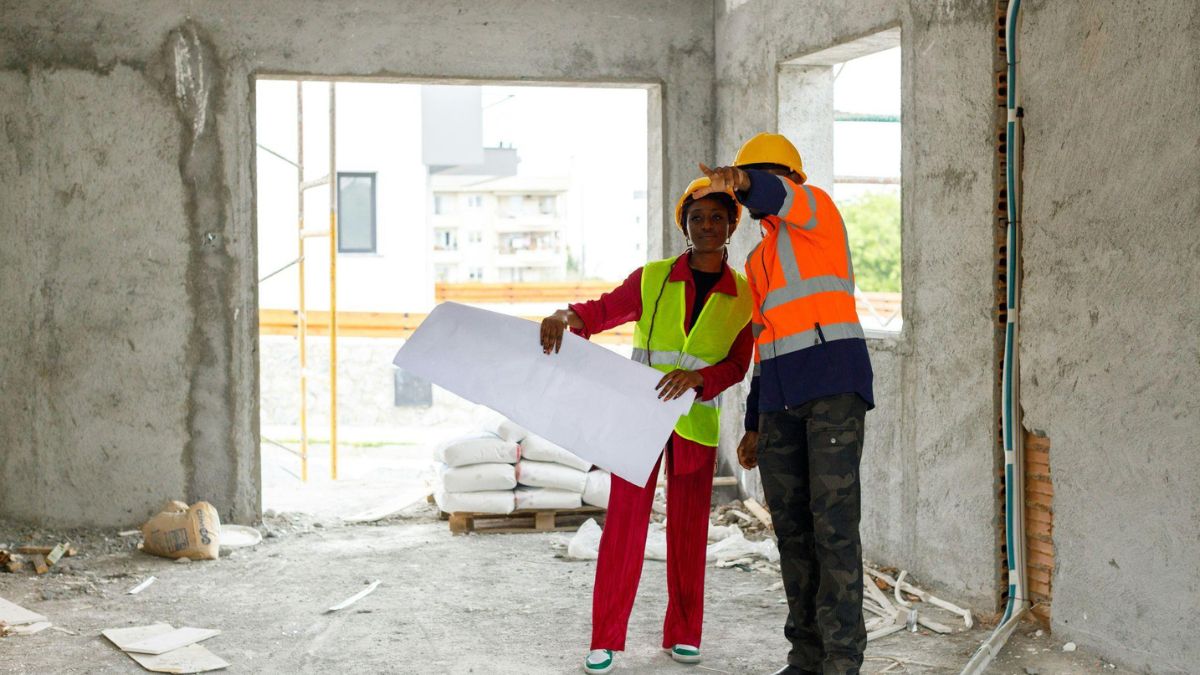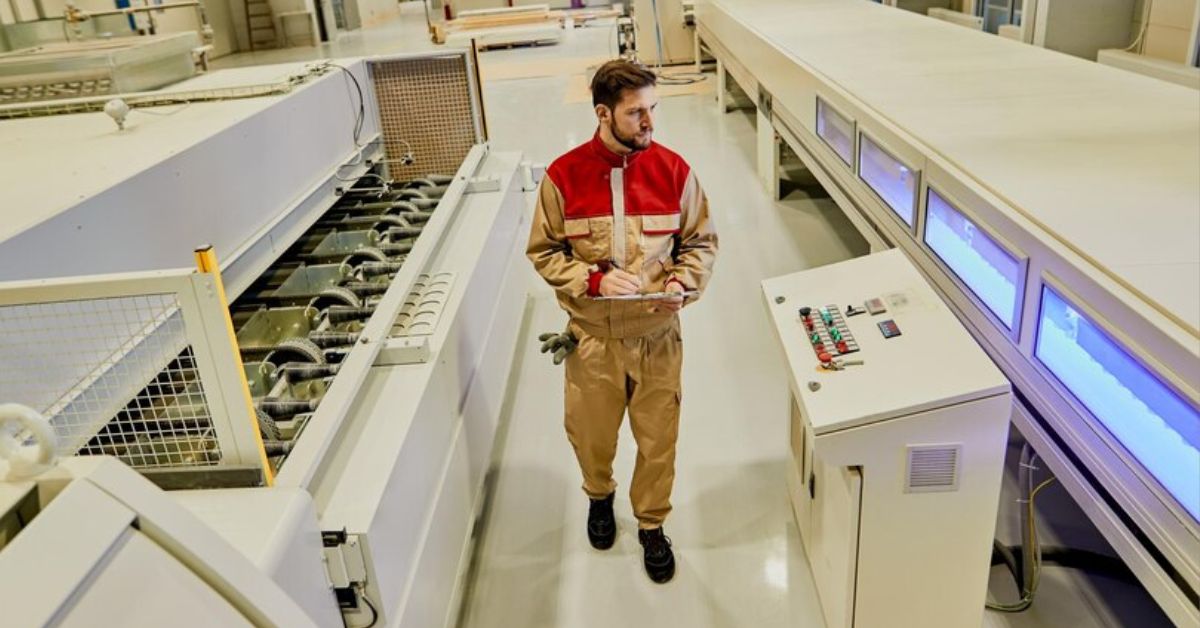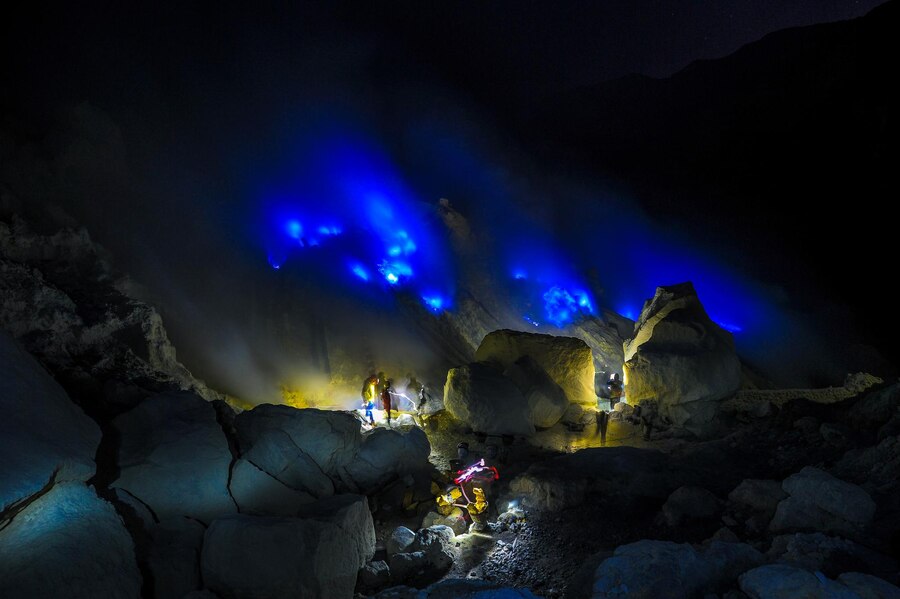Topic
The Best Ways to Handle Waste on Active Construction Sites

Managing waste on active construction sites can be a tough challenge, especially when the pressure to keep projects on track is high. The constant flow of materials, tools, and workers often leaves behind piles of debris, which can quickly become a safety hazard and a logistical nightmare if not handled properly. Whether it’s hazardous materials, general debris, or recyclable waste, effective management is essential to maintain safety, meet regulations, and protect the environment.
In this post, you’ll discover simple yet powerful ways to tackle waste issues on busy construction sites. From sorting and planning to eco-friendly practices and staying compliant with regulations, we’ll walk through the steps that can keep your site clean and safe. By the end, you’ll have actionable strategies that ensure efficient construction site operations while keeping waste in check.
Understanding Different Types of Waste on Construction Sites
Construction sites generate a wide variety of waste, and understanding the different types is the first step toward managing it effectively. There are three primary categories of waste to consider:
- Hazardous Materials: This includes things like asbestos, lead-based paints, and certain chemicals used on construction sites. Improper disposal of hazardous materials can lead to serious environmental damage and health risks for workers.
- Recyclables: Items such as metal scraps, wood, and concrete can often be recycled or repurposed. Sorting recyclable materials on-site not only reduces the amount of waste sent to landfills but also can save money on disposal costs.
- General Debris: This is the bulk of construction waste and includes materials like bricks, drywall, and insulation. While much of this is not harmful, it can accumulate quickly and become a safety hazard if not cleared regularly.
By identifying and sorting these types of waste, you can reduce environmental impact and stay compliant with local regulations. Knowing what waste can be recycled or needs special handling is essential for creating an efficient and responsible disposal system.
Streamlining Construction Debris Removal on Active Sites
Removing construction debris efficiently is crucial to keeping a project running smoothly. If left unmanaged, debris can clog up the workspace, slow down progress, and even create dangerous working conditions. The key to managing debris removal on active construction sites is planning and organization.
First, develop a construction debris removal plan before the project even begins. This plan should include regular removal schedules, dedicated disposal areas, and assigned personnel to monitor waste levels. Having a designated space for waste and debris prevents it from accumulating in work zones, allowing workers to move freely and safely.
Second, consider working with specialized debris removal services. These services can offer on-site sorting, large container drop-offs, and timely pickups, which minimize the disruption to your project. With the right tools and services, your site can stay clean and clutter-free, ensuring a safer, more efficient environment for workers.
Lastly, ensure that your debris removal plan aligns with any local regulations to avoid penalties. A well-planned approach saves both time and money while keeping your project on track and your site safe.
Eco-Friendly Waste Disposal Options
Incorporating eco-friendly practices into construction waste management is not just good for the environment—it can also cut costs and enhance your project’s reputation. Many materials used on construction sites, such as metal, wood, and concrete, can be recycled or reused, helping to reduce the overall waste sent to landfills.
Start by setting up a recycling program on-site. Create designated bins for different types of materials like metals, plastics, and wood. This makes it easier for workers to sort waste as it’s generated. For large-scale projects, you might even consider hiring a recycling service that specializes in construction debris. These companies can handle the heavy lifting, ensuring materials are properly recycled.
Another great option is reusing materials. Leftover wood or bricks, for example, can be repurposed for other projects or even resold. Repurposing reduces the need for new materials and cuts down on disposal costs. Additionally, many companies now offer “deconstruction” services, where buildings are taken apart piece by piece, with materials salvaged for reuse rather than demolished and discarded.
These sustainable practices not only help reduce the environmental footprint of your construction site but can also improve your bottom line by reducing disposal fees and material costs. In today’s market, eco-friendly construction is becoming increasingly important, and adopting green disposal methods sets you ahead of the curve.
On-Site Waste Management Best Practices
Maintaining an organized and clean site is essential for productivity and safety. Implementing effective on-site waste management practices can make a big difference in how smoothly your project runs and how well you handle waste disposal.
A good place to start is by designating specific areas for waste collection. Set up labeled bins or containers around the site for different types of waste—general debris, recyclables, and hazardous materials. This makes it easier for workers to dispose of items in the right place, minimizing confusion and keeping the site orderly.
Worker training is another critical element. Make sure your team understands how to sort waste properly and the importance of keeping the site clean. Regularly scheduled waste removal sessions also help prevent waste buildup. Assigning a staff member or team to monitor waste levels and ensure bins are emptied regularly keeps things running smoothly.
Additionally, consider using technology to track your waste management efforts. Waste tracking software can provide valuable insights into how much waste is being generated and where improvements can be made. Some tools even allow you to track recycling rates, helping you ensure your sustainability goals are being met.
By following these best practices, you’ll create a cleaner, safer work environment while also ensuring that your waste management processes are as efficient and eco-friendly as possible.
Legal Responsibilities and Compliance
Proper waste management on construction sites is not just a matter of safety and organization; it’s also a legal obligation. Failing to adhere to waste disposal regulations can result in hefty fines, delays, and even shutdowns of your project. Understanding and following the relevant laws and standards is crucial to keeping your project running smoothly and avoiding unnecessary legal complications.
Local and federal regulations govern how construction waste, particularly hazardous materials, should be handled. For example, materials like asbestos or lead-based paint require special disposal methods due to the health risks they pose. It’s essential to stay updated on these regulations and ensure your site complies with all local ordinances regarding construction waste disposal.
Penalties for improper waste management can be severe. Violations might result in financial fines or even legal action, which can significantly disrupt your project. To avoid this, make sure your waste removal process is transparent and well-documented. Keeping clear records of where your waste goes, particularly hazardous materials, can protect you in the event of a regulatory inquiry.
To ensure you’re meeting all necessary standards, consider obtaining certifications or working with waste management companies that are familiar with compliance in your area. Green certifications, such as LEED (Leadership in Energy and Environmental Design), also emphasize sustainable practices and can enhance your company’s reputation for eco-friendly construction.
Staying compliant is not only about avoiding penalties—it’s about promoting responsible construction practices that contribute to safer, more sustainable communities.
Conclusion
Effective waste management on active construction sites is essential for safety, compliance, and sustainability. By understanding the different types of waste, implementing debris removal plans, adopting eco-friendly practices, and ensuring legal compliance, you can keep your site organized and efficient.
A well-managed site not only reduces risks but also cuts costs and improves productivity. Prioritizing waste management leads to smoother operations, cleaner environments, and a more professional, responsible approach to construction.
Topic
The Art of Effective Marine Refrigeration Maintenance

Introduction to Marine Refrigeration
Marine refrigeration systems are the lifeline of comfortable and efficient maritime operations, essential for keeping supplies fresh and maintaining the right temperature for all sorts of cargo. On long voyages, these systems become even more critical as access to fresh provisions is limited, making the reliability of refrigeration paramount. Despite their importance, marine refrigeration units are subject to wear and tear, and without regular upkeep, they can face malfunctions that lead to significant inconveniences and costs. For those unfamiliar with the intricacies of these complex systems, engaging in proper maintenance routines or seeking assistance from experts such as Sub Zero marine repair South Florida can make a difference. These specialists are familiar with common issues and adept at preventing potential problems before they escalate to costly repairs.
Marine refrigeration’s efficiency and seamless operation hinge on understanding the system’s complexities. A proactive approach ensures they are less prone to failures, thus extending their operational life. Understanding these systems’ significance and the value of regular maintenance is critical to achieving long-term functional success at sea.
Common Issues in Marine Refrigeration
Marine refrigeration systems, while robust, can be susceptible to specific challenges that can compromise their efficiency. A prevalent issue is the accumulation of frost, which often occurs when the system is exposed to moist air. Frost build-up is more than just an inconvenience; it acts as an insulator that prevents the necessary cold air from circulating effectively. The result is increased energy demands as the system works harder to maintain the desired temperature. Regular defrosting is a simple yet effective solution to prevent this common issue.
Aside from frost accumulation, other typical failures include compressor malfunctions, which can stem from overheating or electrical issues, and thermostat failures that can misread temperature requirements. If left unchecked, such problems may cause significant energy wastage and threaten goods, particularly perishables. Keeping a keen eye on these components and performing regular checks can prevent minor inconveniences from evolving into major problems, ensuring longevity and reliability in refrigeration operations.
Smart Maintenance Techniques
Strategic maintenance goes beyond basic fixes and embraces a preventive mindset. Regular inspections and upkeep can save time and resources and minimize downtime, ensuring the refrigeration system’s optimal performance. Implementing a structured maintenance schedule where routine checks are carried out is an effective way to prevent unexpected breakdowns. Simple tasks, such as ensuring that temperature settings are within recommended ranges and conducting periodic defrosting, can keep the system running efficiently.
Part of intelligent maintenance involves attending to smaller system components. Gaskets, for example, should be inspected for wear because failing gaskets can result in air leakage, causing the refrigeration unit to work harder and consume more energy. Tightening bolts and checking for any signs of rust or corrosion can prevent structural issues that may lead to further complications. These seemingly minor checks can significantly affect the system’s performance and efficiency.
The Role of Technology
Technology continuously transforms marine refrigeration, introducing many advancements that optimize performance and energy efficiency. Modern systems are equipped with digital thermometers that allow for precise monitoring and control of temperatures, ensuring that the refrigeration units operate within the optimal range without unnecessary power usage. Energy-efficient compressors have become a mainstay, designed to minimize energy consumption while maximizing cooling output.
These technological enhancements improve the functionality of refrigeration systems and, by reducing carbon emissions, contribute to the maritime industry’s sustainability goals. They exemplify how integrating innovative technology can lead to meaningful improvements in operational efficiency and environmental impact.
Choosing the Right Service Provider
While routine tasks and minor repairs can often be tackled internally, there comes a time when professional intervention is necessary, particularly for complex issues. Choosing an experienced service provider ensures that systems are repaired correctly and inspected for compliance with the latest safety and operational standards. Professional technicians bring specialized knowledge to provide insights beyond immediate repairs, offering long-term maintenance strategies and solutions.
Engaging with exemplary service is crucial for operators who want to ensure that their refrigeration systems run at peak efficiency and adhere to regulatory standards. These experts keep up with technological advancements in marine refrigeration, offering their clients the advantages of the latest innovations.
Final Words on Maximizing Efficiency
Effective marine refrigeration maintenance is not a one-size-fits-all approach but a strategic combination of routine maintenance, technological advancements, and leveraging the expertise of professionals when necessary. Such a proactive approach ensures these critical systems’ longevity, significant cost savings, and operational reliability. Through consistent attention to detail and strategic upgrades, marine operators can ensure their refrigeration systems remain efficient and effective, making all the difference on those long voyages where reliability is indispensable.
Post HTML
Topic
Discovering the Wonders of the Blue Fire Wilderness

The Blue Fire Wilderness offers a transformative outdoor experience, blending adventure with therapeutic benefits. Known for its unique approach to healing and personal growth, it caters to individuals facing various emotional, behavioral, and psychological challenges. Here, we explore what makes this wilderness program stand out and how it supports personal development.
What is the Blue Fire Wilderness?
The Blue Fire Wilderness program is a therapeutic retreat that combines outdoor adventure with professional psychological guidance. Situated in the scenic backcountry of Idaho, this program uses nature as a backdrop to help teens and young adults (ages 11–28) overcome challenges such as depression, anxiety, addiction, and behavioral disorders.
Participants engage in structured activities like hiking, equine therapy, and fire-building metaphors to develop life skills, self-awareness, and resilience. These activities are supported by a team of multidisciplinary professionals, including therapists, medical staff, and wilderness guides, ensuring a holistic approach to well-being.
Key Features of the Blue Fire Wilder-ness
1. Therapeutic Interventions
- Equine Therapy: Weekly sessions with horses help improve communication, empathy, and emotional regulation.
- Evidence-Based Models: Techniques like Cognitive Behavioral Therapy (CBT), Dialectical Behavior Therapy (DBT), and neurofeedback are utilized to address individual needs.
2. Adventure-Based Learning
Participants are encouraged to explore physical activities such as hiking and rock climbing. These challenges build confidence, teach perseverance, and offer a sense of accomplishment.
3. Family Integration
Programs include multi-day family workshops to rebuild connections, improve communication, and prepare for a seamless transition back to daily life.
4. Personalized Treatment Plans
Each participant receives a customized treatment plan, ensuring specific struggles are addressed. Regular assessments allow for dynamic adjustments to the therapy process.
Comparison Chart: Blue Fire Wilderness vs. Traditional Therapy
| Feature | Blue Fire Wilderness | Traditional Therapy |
|---|---|---|
| Environment | Outdoor wilderness | Office setting |
| Activities | Hiking, equine therapy, group tasks | Talk therapy, occasional group sessions |
| Duration | Immersive (weeks/months) | Hour-long sessions over time |
| Family Involvement | Mandatory family workshops | Limited |
| Team Approach | Multidisciplinary team | Single therapist |
| Focus Areas | Life skills, self-reliance, emotional growth | Behavioral/emotional challenges only |
Benefits of the Blue Fire Wilderness Experience
- Improved Mental Health: The therapeutic process encourages self-reflection and coping strategies.
- Life Skills Development: Practical skills like fire-building and navigation foster independence and confidence.
- Stronger Family Bonds: Collaborative sessions bring families closer together.
- Physical Wellness: Outdoor activities enhance fitness and overall well-being.
- Sustainable Growth: Participants leave with tools to manage future challenges independently.
Is Blue Fire Wilderness Right for You?
This program is ideal for individuals seeking a non-traditional, immersive approach to therapy. Whether it’s a teenager struggling with peer pressure or a young adult navigating life transitions, the wilderness experience offers a unique path to healing.
Topic
Where to Buy Children’s Bee Suit

When it comes to beekeeping, ensuring safety is paramount, especially for young aspiring beekeepers. A children’s bee suit is an essential piece of protective gear that offers peace of mind to parents and confidence to kids. But where can you find the best bee suits for kids that combine safety, durability, and comfort? This guide will walk you through everything you need to know about buying the perfect kids’ beekeeping suit for your child.
Why Your Child Needs a Bee Suit
Beekeeping is a fascinating hobby, but it comes with its risks. Bees can be unpredictable, and stings can cause discomfort or allergic reactions. For children, the right protective gear is not just recommended—it’s necessary. A high-quality children’s bee suit acts as a barrier, allowing young beekeepers to learn and explore safely.
In addition to safety, a properly designed suit provides comfort and flexibility, ensuring your child stays cool and enjoys the experience. That’s why choosing the right protective beekeeping gear for children is crucial.
Features to Look For in Kids’ Beekeeping Suits
When selecting a bee suit for your child, consider these key features to ensure both safety and comfort:
1. Durable and Lightweight Materials
The best kids’ beekeeping suits are made of high-quality fabrics that are thick enough to prevent stings yet lightweight for ease of movement. Look for materials like cotton-polyester blends or ventilated mesh.
2. Full-Body Protection
A reliable suit should cover your child from head to toe. Children’s bee suits often come with elastic cuffs, ankle closures, and reinforced zippers to prevent bees from sneaking in.
3. Breathability
Ventilation is a critical factor, especially for children who may find the suit warm during long sessions. Ventilated children’s bee suits help keep your child cool while providing optimal protection.
4. Easy-to-Use Design
Look for suits with simple zippers and detachable veils for easy wear and removal. This feature is especially helpful for beginners who are still getting used to the gear.
Top Brand for Children’s Bee Suits: Why Choose Oz Armour
When it comes to quality and reliability, Oz Armour stands out as a trusted name in beekeeping apparel. Known for its innovative designs and high standards, Oz Armour offers some of the best children’s bee suits on the market.
Why Choose Oz Armour?
- Uncompromised Safety: Oz Armour’s suits are made with reinforced seams and premium materials, ensuring your child’s safety even in the busiest hive environments.
- Exceptional Comfort: The breathable fabric technology used in Oz Armour suits keeps your child cool and comfortable throughout their beekeeping experience.
- Affordable Options: With a range of affordable bee suits for kids, Oz Armour provides options for families without sacrificing quality.
- Durable Designs: These suits are built to last, making them an excellent investment for young beekeepers.
You can explore Oz Armour’s collection of kids’ beekeeping suits here.
Where to Find Affordable and Durable Bee Suits for Kids
Now that you know what to look for, the next step is finding the right retailer. Here are some top options to consider:
1. Oz Armour’s Online Store
Oz Armour’s website offers a comprehensive range of children’s bee suit, including ventilated and full-body options. Their easy-to-navigate site allows you to browse features, compare prices, and read customer reviews.
2. Beekeeping Specialty Stores
Local beekeeping supply stores often carry kids’ beekeeping suits and other protective beekeeping gear for children. These stores provide the advantage of trying on the suits before purchasing.
3. Online Marketplaces
Platforms like Amazon and eBay also feature a variety of affordable bee suits for kids. However, ensure you check product reviews and specifications for quality assurance.
Why Invest in Protective Beekeeping Gear Tailored for Children
Investing in a suit designed specifically for children ensures better safety, comfort, and durability. A standard adult suit may be too heavy or loose for a child, increasing the risk of stings.
Tailored Designs for Peace of Mind
Child-specific suits, like those offered by Oz Armour, are tailored to fit snugly while allowing freedom of movement. This eliminates gaps and ensures bees cannot sneak inside.
Encouraging a Lifelong Passion
Providing your child with the proper gear can inspire confidence and a love for beekeeping, setting them on a path to explore the wonders of nature safely.
Conclusion
Beekeeping is an enriching activity, offering children a chance to connect with nature while learning valuable skills. However, safety must always come first. Investing in a high-quality children’s bee suit ensures your child can enjoy this fascinating hobby with confidence and comfort.
By selecting a trusted brand like Oz Armour, you provide your young beekeeper with unparalleled safety, durability, and ease of use. Whether you’re shopping online, at a specialty store, or through a trusted retailer, prioritize protective gear tailored to fit your child’s needs.
Start your child’s beekeeping journey with the right equipment—because their safety and joy in discovery are worth it. Explore Oz Armour’s collection today and take the first step toward a safe and successful beekeeping adventure.

 Cartoon9 months ago
Cartoon9 months agoUnlocking the Potential of Nekopoi.care: A Comprehensive Guide

 Game8 months ago
Game8 months agoExploring Aopickleballthietke.com: Your Ultimate Pickleball Destination

 BUSINESS8 months ago
BUSINESS8 months agoWhat Companies Are In The Consumer Services Field

 TECHNOLOGY7 months ago
TECHNOLOGY7 months agoThe Guide to Using Anon Vault for Secure Data Storage

 HOME IMPROVEMENT9 months ago
HOME IMPROVEMENT9 months agoVtrahe vs. Other Platforms: Which One Reigns Supreme?

 ENTERTAINMENT9 months ago
ENTERTAINMENT9 months agoThe Epic Return: Revenge of the Iron-Blooded Sword Hound

 HEALTH9 months ago
HEALTH9 months agoUnveiling the Mystery of Pikruos: A Comprehensive Guide

 HOME IMPROVEMENT9 months ago
HOME IMPROVEMENT9 months agoExploring the Events of 2023-1954: A Look Back in Time
















